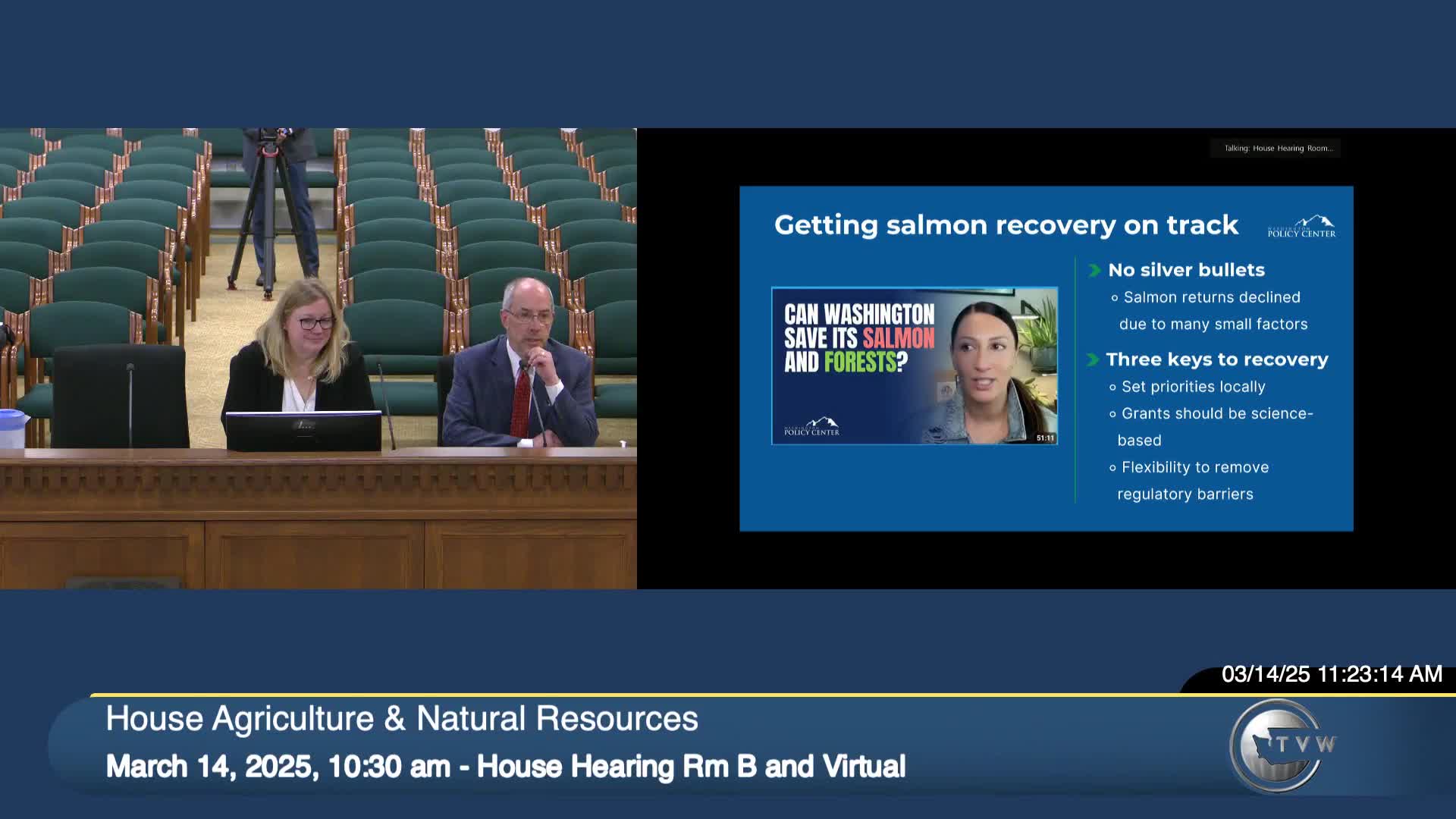Panel urges local priority setting, science‑based grants and regulatory flexibility to accelerate salmon recovery
March 14, 2025 | Agriculture and Natural Resources, House of Representatives, Legislative Sessions, Washington
This article was created by AI summarizing key points discussed. AI makes mistakes, so for full details and context, please refer to the video of the full meeting. Please report any errors so we can fix them. Report an error »

Todd Myers, vice president for research at the Washington Policy Center, told the House Agriculture and Natural Resources Committee that salmon recovery has not met targets and that three changes could speed progress: prioritize locally, base grants on science and reduce regulatory barriers that slow habitat projects.
“My hope is that the people on the ground who see those barriers to salmon recovery up close are empowered to set primary decisions,” Myers said. He argued that state funding should be directed to regional priorities where the money can have the greatest biological impact rather than “spread everything like peanut butter.”
Myers proposed using tools that grant agencies flexibility to speed projects, including encouraging use of the Office of Regulatory Innovation and Assistance (ORIA) and piloting a regulatory sandbox already used by about three dozen states. He described the regulatory sandbox as a mechanism that lets regulators and innovators test approaches that meet regulatory objectives without imposing standard, potentially obstructive procedures.
Myers also noted positive local results—he highlighted the Nisqually Tribe’s recent report of increasing wild Chinook numbers following habitat restoration partnerships—as examples of success that could inform other regions. He offered to provide the committee with his analysis “Getting Salmon Recovery Back on Track” and other materials.
Ending: Committee members signaled interest in exploring regulatory changes and interim follow‑up; presenters agreed to provide research and case studies requested during questioning.
“My hope is that the people on the ground who see those barriers to salmon recovery up close are empowered to set primary decisions,” Myers said. He argued that state funding should be directed to regional priorities where the money can have the greatest biological impact rather than “spread everything like peanut butter.”
Myers proposed using tools that grant agencies flexibility to speed projects, including encouraging use of the Office of Regulatory Innovation and Assistance (ORIA) and piloting a regulatory sandbox already used by about three dozen states. He described the regulatory sandbox as a mechanism that lets regulators and innovators test approaches that meet regulatory objectives without imposing standard, potentially obstructive procedures.
Myers also noted positive local results—he highlighted the Nisqually Tribe’s recent report of increasing wild Chinook numbers following habitat restoration partnerships—as examples of success that could inform other regions. He offered to provide the committee with his analysis “Getting Salmon Recovery Back on Track” and other materials.
Ending: Committee members signaled interest in exploring regulatory changes and interim follow‑up; presenters agreed to provide research and case studies requested during questioning.
View full meeting
This article is based on a recent meeting—watch the full video and explore the complete transcript for deeper insights into the discussion.
View full meeting
